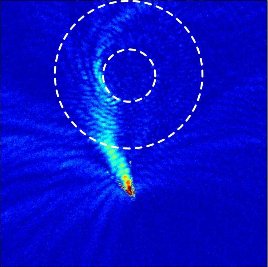Project IV 2010-2011
Desktop Black Holes
Description
 Black holes are among the most fascinating predictions of Einstein's
theory of gravity. Their main characteristic is a "surface of no
return" or "event horizon", from behind which even light cannot
escape to an outside observer. But even though black holes are known
to exist in the universe, it is clearly not easy to do experiments
with them.
Black holes are among the most fascinating predictions of Einstein's
theory of gravity. Their main characteristic is a "surface of no
return" or "event horizon", from behind which even light cannot
escape to an outside observer. But even though black holes are known
to exist in the universe, it is clearly not easy to do experiments
with them.
However, various scientists have argued that many aspects of black holes have an analogue in ordinary fluids and other relatively simple systems, such as Bose-Einstein condensates! In these systems, sound waves or electromagnetic waves get trapped in certain regions of space, much like the way in which light gets trapped behind the black hole event horizon. Many aspects of black hole physics, for instance Hawking radiation, can thus be studied directly, in a much simpler setup than that of gravitational physics.
In this project, you will get to learn how these "laboratory black holes" resemble real gravitational black holes, and study several aspects of their fascinating physics.
Prerequisites
Some basic General Relativity is useful but not absolutely necessary (you can learn it as we go along).
Resources and references
In the last couple of years several groups have reported experimental results on "black holes in the lab", and there is a much longer list of theoretical mathematical investigations. Some references in the popular press: